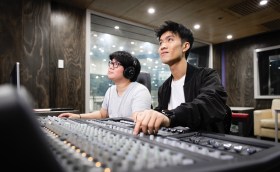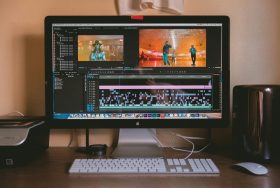Studying full time without having to support yourself with paid work is a luxury few can afford; it’s questionable whether that’s even ideal. At some time in our lives, most of us try to combine work and study, with varying degrees of success, exhaustion or muddling through.
If the stats tell us anything, completing any extended course of study is hard. It takes grit, discipline and showing up, long after the thrill has faded – and that’s assuming you’ve enrolled in the right course for your purposes.
It’s not surprising that one in five Australian university students drops out in their first year. As the Age reported recently, drop-out rates are rising, with many struggling to balance study with the need to work longer hours in order to get by. Federal Education Data found that in 2021 only 62 per cent of domestic university students had completed their course within six years, suggesting it’s a long haul to the finish line for many of us – especially if we’re interrupted by caring duties, a rental/mortgage crisis or a pandemic.
The good news, post-pandemic, is that employers and educational institutions are now more flexible than ever, but it’s still likely to be a juggle.
Whether you’re trying to fit in further study around an existing career, or waiting tables with your primary focus on study, the start of a new year is a great time to put in place some strategies that will not only help you stay the course but will also keep your health, sanity and relationships intact.
In this article:
Ten tips to combine work and study in the arts
1. Be realistic about the time study requires
It’s easy to get carried away when you’re browsing the subject offerings in a handbook. Many courses, especially those in the arts, look fun and fascinating when they’re summarised in a couple of enticing paragraphs. While it’s motivating to envision study, it’s important to remember these handbooks are overseen by marketing departments designed to attract enrolments. Do your research and be realistic about the time you will need to devote to study before you commit to it.
Jacqui Burley, ArtsHub’s CFO, remembers working three days a week while she completed her Master of Commerce at Deakin University. (She was also raising an eight and five-year-old at the time.) She says her number one tip would be to find out the number of expected hours each week from the course provider, and create your own study schedule to maintain those expected number of hours. ‘Then add two more hours each week,’ advises Burley. ‘There are always links out to other relevant and interesting articles to read, and if you are just giving yourself the required number of hours without a buffer, then you will miss out on delving into the really creative and inspiring parts of the course.’
2. Use your calendar and schedule, schedule, schedule
It sounds like a no-brainer that you’ll need to be super organised to combine study with work. But if you’re even a little bit ADHD, planning can be hard, and procrastination is endemic. It’s a common human trait to overestimate how much we can achieve in a particular day, or cram into the vague ‘later’ – those crucial, nervous-breakdown weeks at the end of semester.
Don’t put off the planning. Sit down with your calendar at the start of a study period and put in dates of classes, assignments and exams, blocking out dedicated study time each day or week. You can even get more granular and create an instruction manual for yourself, a technique employed by Wajiha Pervez, a textile designer, artist and academic who has been combining work with study for the last eight years – she’s currently researching a PhD in circular fashion design.
‘I put my work and personal project deadlines in my calendar first and then make a 10-step plan to make them happen,’ says Pervez. ‘It’s like writing an instruction manual for myself. I like the 10-step constraint because then the tasks associated with each step don’t seem overwhelming.’
3. Try ‘timeboxing’ to focus
Pervez, who writes a newsletter full of creative productivity and motivation ideas, also advocates ‘Timeboxing’.
‘At the start of each day, I look at my notebook and ask what is the single most important task for today. I then block the most productive hours of my day to get started on it. My boxed time is usually in the morning between 6-8 am. It doesn’t matter if I finish the task or not, but knowing that I have given two hours of undivided attention to the most important task of the day sets up the day right. I usually check my emails after that and plan the rest of the day.’
4. Consider studying online and doing it part-time
Cut out the commute and do it in your own time. There’s no substitute for face-to-face teaching and the magic of in-person collaboration, especially in creative domains where teaching and mentoring go hand in hand. But if you’re trying to study alongside a demanding job, carer commitments or health issues, then online study could save valuable time and energy.
Being realistic about your limits – and your need for rest – might also mean accepting that it takes longer than you’d like to complete, with a part-time study schedule. Many courses now offer flexible blocks, where you can study one subject at a time, for instance. Research your options and find one that looks like it suits your brain and learning style.
5. Look for jobs with flexible hours
Again, this seems like straightforward advice, but the devil is in the detail. What does flexibility mean to you, and how much flexibility will you you need for this particular study? Freelancing and self-employment are one way to go, but other jobs with flexible hours might include everything from dog-walking to graphic design, or a senior management role that’s part-time or shared. Other common flexible jobs include tutoring, teaching, hospitality, retail work, counselling, copywriting, content-creating, social media managing or yoga-instructing.
Visual artist Linda Studená recently completed an MFA at the Victorian College of the Arts and says that she always worked throughout her studies, but kept the focus on the study, doing casual and contract work.
‘During my bachelors in the early 00’s I was lucky to receive Austudy and supplemented my income with casual hospitality work,’ says Studená. ‘During my recent Masters study I committed to full time study and juggled my many part time/casual/freelance contracts to make it work. During my first year during the lockdowns, I worked online from my studio and then went straight into studio practice. In my final year I freelanced as a mentor, curated a community show and tapped into my savings. For me it was important to prioritise study to get the most from it. Lucky for me, my employers and clients were super supportive, which allowed me to fully immerse into my arts practice and essay writing. Full time study sets you up with a disciplined studio practice of three or more days per week, which is ideally the kind of set up I was aiming for post study.’
Read: What we learned: top 10 career lessons from 2023
6. Be honest with your employer – and your lecturer
Make sure your employer knows you’re studying so you can work out a schedule that benefits you both, with regards to class times, placements and time off that might be required. Some employers will be supportive, particularly if the study relates to the work you’re doing for them.
Satara Uthayakumaran, an ArtsHub Amplify Collective writer who is currently studying Law and also working as a political advisor says: ‘I find it easiest to manage work and study when the two complement each other. Studying law and also working as an advisor at the Department of Prime Minister and Cabinet means that I am able to critically apply my legal knowledge in policy review and analysis.’
Good communication is key too, when it comes to your tutors and lecturers. Make sure you let them know what’s going on for you so they can support you with flexible options like deadline extensions.
7. Make your job physical and social to counteract study
This advice comes from ArtsHub’s managing editor, Madeleine Swain, who originally trained as an actor back in the 80s in England, before coming to Australia and establishing herself as a writer, editor and film reviewer. Swain’s jobs at school and uni included paper rounds, cleaning in a hospital and serving in her grandmother’s pub.
‘My advice would be to always work if you are at all able,’ says Swain, ‘for the money, independence and satisfaction of providing for yourself – but always, always, always make sure it’s physical and/or do-it-on-the-job work.
‘Hard and physical work, like in cleaning, hospitality or retail is my recommendation, because you do it, you have to concentrate and focus while you’re there (taking your mind off the stresses of study, your arts practice or life) and then you finish and can’t take the work home with you. Every day is a new one and offers a clean slate. Plus, you get to meet and observe people from all other walks of life and for an artist (I was an actor) that all feeds into your imagination and databank of characters and personality traits to draw on later.’
8. Design your environment – and make it an adventure
Here’s another tip from designer Wajiha Pervez, who says the best remedy she has discovered for not relying solely on willpower for work and study is to carefully design her own environment for minimum distractions.
‘I have separate work and study profiles on my computer. I log into them depending on which mode I am in. I play focus music, disable all notifications, especially during boxed hours and keep lots of water and healthy snacks with me to power through. I also take a five-minute stretching break after every 25 minutes because both my work and studies require sitting to write and research for longer periods of time.’
Taking the laptop out of the study is another strategy Pervez likes. ‘This is the trick I learned from Cal Newport who is an associate professor at Georgetown University and a best-selling author. The idea is to make the work into a tiny adventure and explore a new spot. For example, I try to not work from my desk at least once a week. I go to a new cafe, library or park and then spend the afternoon smashing out tasks.
‘I sometimes add another layer to it where I combine learning with something monotonous and repetitive. For example, listen to books while cleaning or during my commute.’

9. Rest
The season of your life when you try to combine work – especially career-building work – with study commitments, is likely to be one of life’s tougher ones, so make sure you take regular breaks and build in rest times. Rest might mean naps, novel-reading, creative play, exercise, or catching up with friends.
Leo Chau is one of ArtsHub‘s Amplify Collective contributors and is studying journalism at UTS while also writing freelance. He says he struggles to find the right balance of taking opportunities while also making time for rest, but it’s a work in progress.
‘In terms of stress, it is important to ensure that you do not put too much pressure on yourself and only do as many extracurriculars you know you can possibly handle without feeling burnout, which is counterproductive and leads to demotivation,’ says Chau. ‘Also, consider setting time for yourself including leisure or pursuing skills that you are interested in (whether it be a language or writing) as it could improve your career prospects and make you happy!’
10. Reward yourself for every little milestone reached
‘It’s important to set yourself a reward (however small) for each study milestone achieved,’ says Sol Wise, CEO of the ArtsHub group. Wise remembers the hard slog of working full time with a young family, while also studying for a postgraduate qualification in order to become a Certified Practicing Accountant.
‘Small rewards for me included things like a massage, movies, dining out, making time to go on hikes, and, back then, buying records’, says Wise.
It’s a good note to close on. Rewarding yourself for doing it tough and achieving those goals is a great way to keep yourself going, to keep trying and remember that after study finishes, holidays are due.






